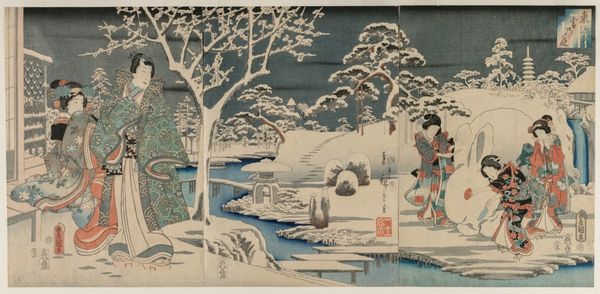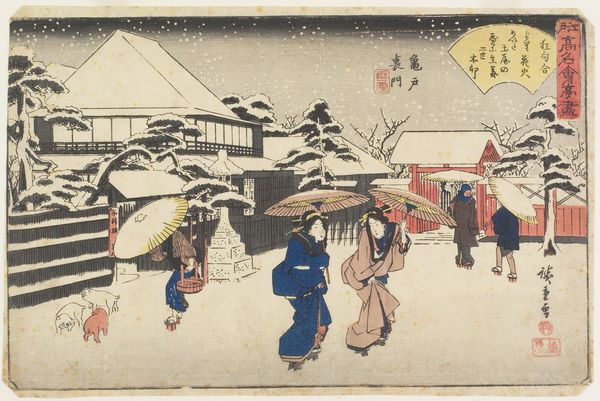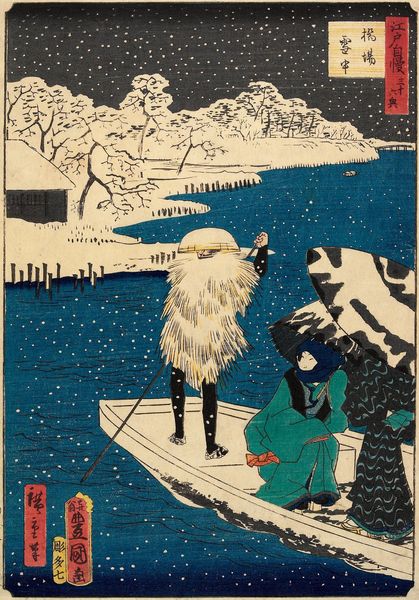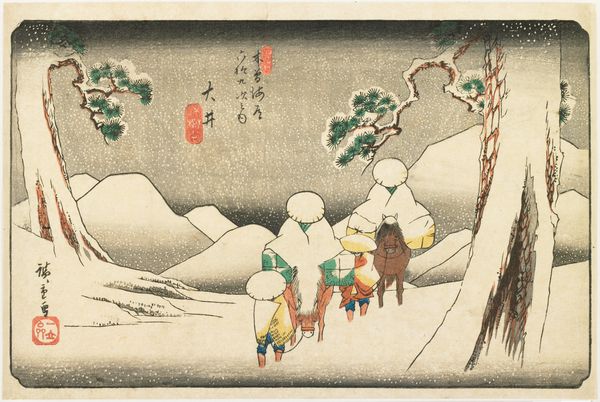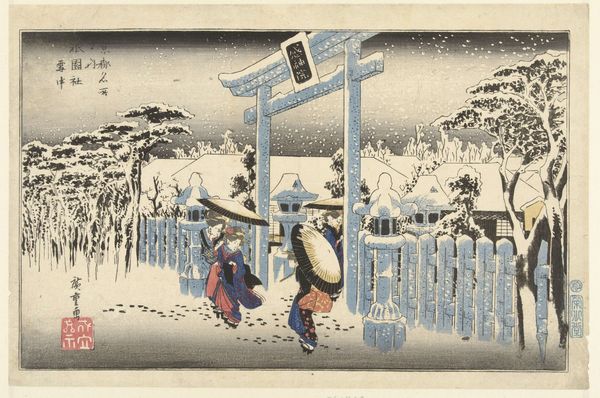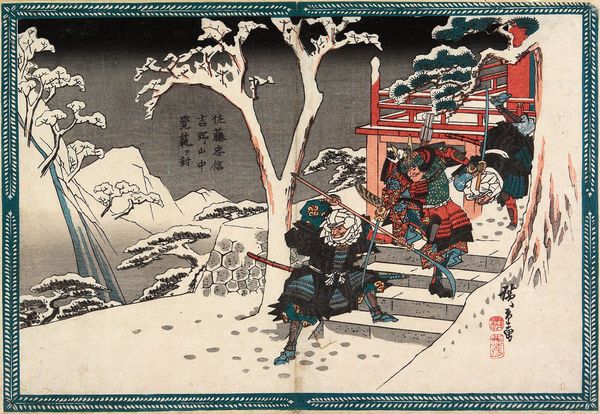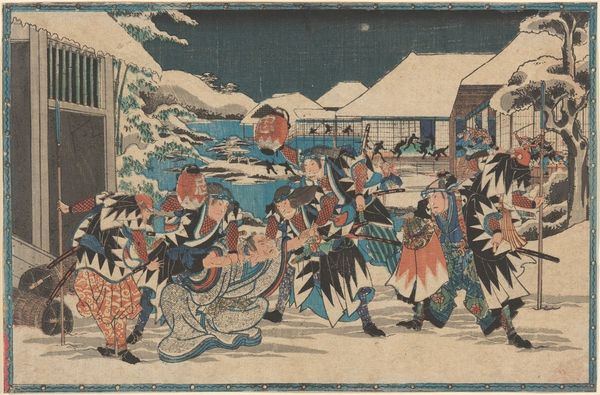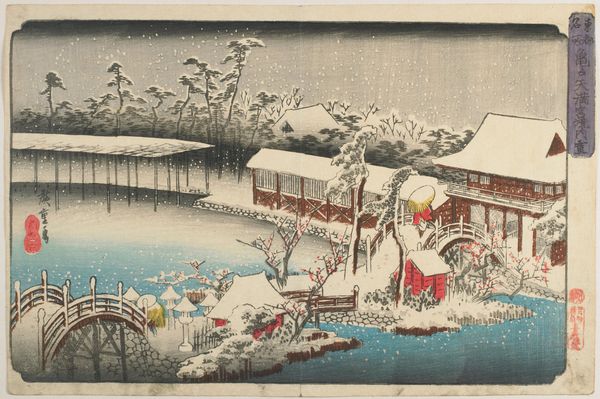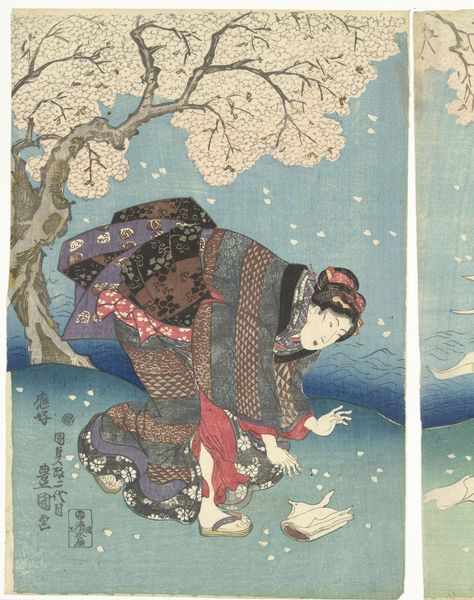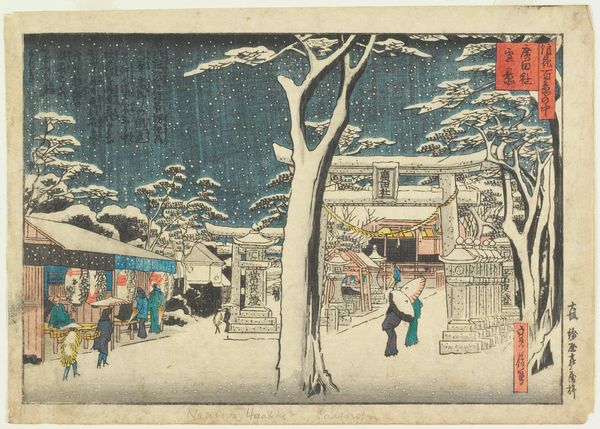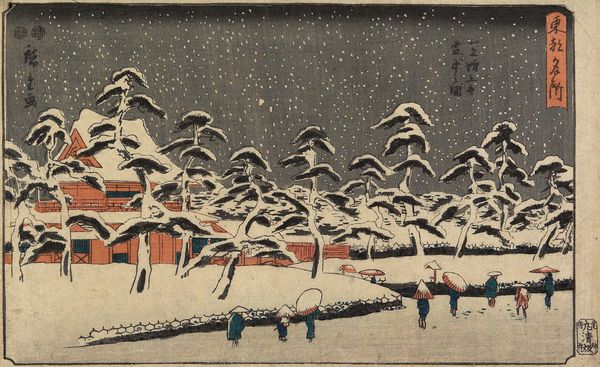
print, ink, woodblock-print
# print
#
landscape
#
ukiyo-e
#
ink
#
woodblock-print
#
decorative-art
#
decorative art
#
watercolor
Dimensions: 8 1/2 × 11 5/8 in. (21.6 × 29.5 cm) (image, sheet, uchiwa-e)
Copyright: Public Domain
Editor: Right now we are looking at "Snow at Akashi", possibly from 1854, a woodblock print in ink and colors by Utagawa Hiroshige. There's something about the stark contrast between the falling snow and the figures walking through it that really draws me in. How do you interpret this work? Curator: Well, it’s crucial to view Hiroshige’s work, especially these Ukiyo-e prints, within their social context. They were made for a rising merchant class, eager to consume images of famous places and fashionable life. So, consider who this was for, this idealized snow scene in Akashi. Editor: That's a good point. It feels like there is some sense of fantasy here. Were the locations depicted strictly realistic? Curator: Not entirely. These prints, while often documenting actual places, also functioned as a form of tourism *before* photography. Hiroshige catered to desires, shaping perceptions of locations like Akashi, constructing a particular view of Japanese identity and cultural values for a public increasingly disconnected from rural life. Consider also the role of the publisher; how did commercial forces influence the images produced and disseminated? Editor: So it’s not just a picture of a snowy day; it’s part of a bigger system. Almost like an early form of marketing… shaping what people want to see and experience. Curator: Exactly! The image participates in creating and selling that experience. Editor: I never thought of it that way. Looking at the print again, it’s less a candid view and more like a carefully constructed performance. I can really see the cultural impact and intentional choices now, thanks! Curator: It’s a testament to the power of art in shaping and reflecting our desires and social structures. These prints offer a fascinating window into that complex relationship.
Comments
minneapolisinstituteofart almost 2 years ago
⋮
Despite the title, the subject of this print is not the "Tale of Genji" itself but rather a nineteenth century takeoff of it, the novel Nise Murasaki inaka Genji (False Murasaki and Rustic Genji) written by Ryñtei Tanehiko. Featuring action and adventure, Ryñtei's adaptation of the classical courtly romance became popular among the masses, which prompted ukiyo-e artists to design prints illustrating scenes from the novel. For this print, Hiroshige depicts Mitsuuji, the hero of the novel, visiting a shrine on Akashi beach with his attendants. Hiroshige exercised artistic license by setting the scene in snow, thus creating a fan with a "cool" image for use during Japan's hot summer months.
Join the conversation
Join millions of artists and users on Artera today and experience the ultimate creative platform.
